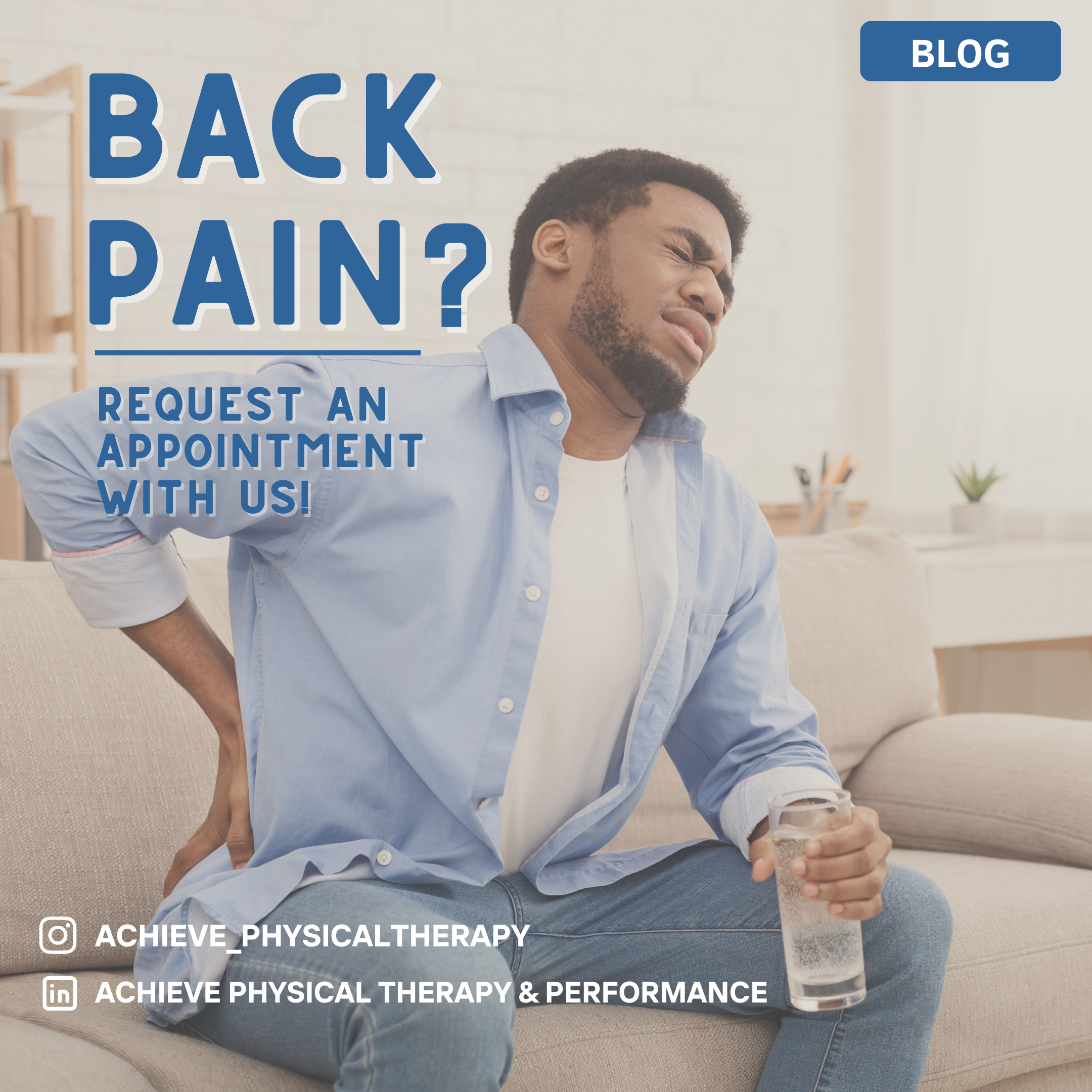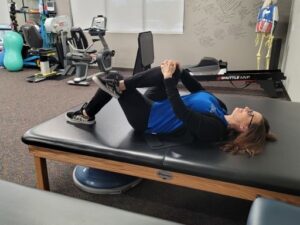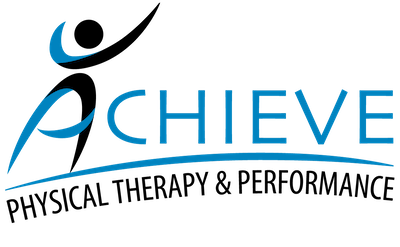
Back pain is a common condition that affects millions of people worldwide. It can significantly impact one’s quality of life ranging from severe or minor discomfort to debilitating agony.
We will explore the various causes of back pain, provide tips for pain reduction, and emphasize the benefits of physical therapy in managing and eliminating back pain.
What age group is most impacted by back pain?
Over time we develop arthritic changes in our backs due to normal wear and tear. Back pain is likely to affect almost everyone at some point in their lives and is one of the most common ailments seen in medical practices. Generally, back pain becomes more prevalent as people age. Adults between the ages of 30 and 60 are most commonly affected by back pain, which can be brought on by sedentary lifestyles, poor posture, or work-related stress. Research suggests that between 60% and 75% of the population who experience back pain once will go on to have recurring or chronic problems.
To most people, their low back pain is confusing and frustrating. Many times, it starts without warning and for no obvious reason. It will interfere with the performance of basic daily activities or the ability to get a good night’s sleep. Then, often the pain may subside just as unexpectedly as it started. When episodes of back pain subside, most people will then go on to forget about their back troubles. More often than not, the individual’s back pain will return, and it will be worse than before.
Common Back Problems Seen by Physical Therapists:
- Low Back Pain (LBP)
- Arthritis Pain
- Strains and Sprains
- Muscle Spasms
- Herniated Discs
- Degenerated Discs
- Radiculopathy
- Sciatica
- Piriformis Syndrome
- Sacroiliac Joint Dysfunction
- Scoliosis
- Spondylosis
- Stenosis
Common Causes of Back Pain:
- Poor Posture: Maintaining incorrect posture while sitting, standing, or lifting heavy objects can strain the muscles and ligaments supporting the spine, leading to back pain.
- Muscle and Ligament Strain: Overexertion, sudden movements, or repetitive activities can cause muscle and ligament strains, resulting in acute or chronic back pain.
- Herniated Discs: When the soft, gel-like material within the intervertebral discs protrudes or ruptures, it can compress nearby nerves, causing back pain. Discs herniation is often a result of age-related degeneration or traumatic injury.
- Spinal Stenosis: This condition involves the narrowing of the spinal canal, placing pressure on the spinal cord and nerves. Spinal stenosis can lead to back pain, numbness, and weakness in the affected areas.
- Arthritis: Osteoarthritis and rheumatoid arthritis can affect the spine, leading to chronic back pain and stiffness.
Reducing Back Pain
When suffering from back pain, it’s best to start the recovery process as soon as possible rather than hoping the pain will subside, as this could develop into chronic back pain.
- Exercise and stretching: Engaging in regular physical activity and targeted exercises can strengthen the back muscles, improve flexibility, and alleviate back pain. Activities like walking, swimming, and yoga are particularly beneficial.
- Maintaining Proper Posture: Being Mindful of your posture during daily activities is crucial for minimizing back pain. Sitting and standing with a straight back, using ergonomic furniture, and taking regular breaks from prolonged sitting can make a significant difference.
- Lifting Techniques: When lifting heavy objects, it is vital to use proper lifting techniques to avoid straining the back. Bend the knees, keep the object close to your body, and engage the leg muscles while lifting.
- Weight Management: Maintaining a healthy weight is essential for reducing the strain on the back. Excess weight can contribute to back pain by putting additional stress on the spine and its supporting structures.
- Heat and Cold Therapy: applying a heating pad or taking warm showers can relax the muscles and relieve back pain. Conversely, cold packs or ice packs can reduce inflammation and numb the area, providing temporary pain relief.
Here 5 Exercises to Reduce Back Pain
Lower Trunk Rotation
Lie on your back with your knees bent. Keep your feet and knees together and lightly rotate your spine. Stop the stretch when you feel your hips coming off of the table. Only rotate to approximately 45 degrees and rotate back and forth like a windshield wiper.
Repeat for 2 minutes.

Abdominal Bracing
Lie on your back with your knees bent. Slightly elevate your hips but not high enough to where it comes off of the table. Simultaneously, squeeze your abdominal muscles down towards the table. Continue to breathe.
Hold this for 10 seconds and rest for 10 seconds. Repeat for 2 minutes.
Single Knee to Chest
Bring one knee to your chest.
Hold for 5-10 seconds. Repeat alternating legs to your chest for a time of 2 minutes.

Figure 4 Stretch
Cross one ankle over to the opposite knee and press down on the resting leg. You should feel the stretch in your hip.
Hold this stretch for 30 seconds if you can tolerate it. Repeat for 3 repetitions, then switch legs.

Piriformis Stretch
Cross one ankle over to the opposite knee. Pull the resting knee across your body and up towards your chest. (You should aim for your opposite shoulder as a reference). This stretch should be felt over the crossed leg buttock.
Hold for 30 seconds if you can tolerate it. Repeat for 3 repetitions on each leg.

Management of your back problem is each individual’s responsibility, but we are here to help you. You could benefit from an individualized consultation with a physical therapist with specific training to evaluate your pain if it does not subside.
Physical Therapy Treatment for Back Pain
Physical therapy is a highly effective plan of action for treating and managing back pain. One of our licensed physical therapists can assess your condition and develop a personalized treatment plan to address your specific needs.
Here are some ways physical therapy can help:
- Pain reduction: Physical therapists use various techniques such as manual therapy, massage, and electrical stimulation to reduce pain and improve mobility.
- Strengthening and Stretching: targeted exercises prescribed by a physical therapist can strengthen the back muscles, improve flexibility, and enhance overall spinal stability.
- Posture Correction: Physical therapists can evaluate your posture and provide guidance on proper alignment and ergonomics to prevent future back pain.
- Education and prevention: physical therapy sessions include education on body mechanics, proper lifting techniques, and strategies to prevent future back pain episodes.
- Rehabilitation after injury or surgery: if you’ve experienced a back injury or undergoing spinal surgery, physical therapy plays a vital role in the rehabilitation process, aiding in the recovery and restoring function.
Physical therapy is the best non-surgical and non-invasive option for treating chronic back pain. Large-scale studies have shown that physical therapy can provide up to 60% improvement in lower and chronic back pain.
Back pain is a common ailment that can significantly impact an individual’s daily life. Understanding the common causes of back pain, adopting strategies to reduce pain, and seeking professional help like physical therapy are crucial steps toward relief and recovery. By incorporating exercise, maintaining proper posture, and managing weight, individuals can take proactive measures to prevent future episodes of back pain. Physical therapy can offer a comprehensive and effective approach to managing back pain, providing tailored treatment plans that address individual needs and promoting long-term recovery. By taking control of your back pain, you can regain a pain-free and active lifestyle.
